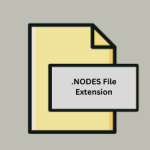.ARIA File Extension

Chipsounds Sound File
| Developer | Plogue |
| Popularity | |
| Category | Audio Files |
| Format | .ARIA |
| Cross Platform | Update Soon |
What is an ARIA file?
The ARIA file extension is associated with audio files that contain sound data, typically in a digital format. These files are used for storing various types of audio content, such as music, voice recordings, sound effects, and more.
ARIA files are widely used in the digital media and entertainment industry to deliver high-quality audio experiences to users.
More Information.
The ARIA file extension has been in use for several years and has evolved along with advancements in audio technology.
Initially, it was introduced as a way to standardize audio file formats, allowing for compatibility between different hardware and software systems.
It has become a versatile format for audio content in various applications, including music players, audio editing software, and multimedia presentations.
Origin Of This File.
The ARIA file extension doesn’t have a specific origin or creator. Instead, it is a generic extension used for audio files across different software applications and platforms.
Various audio software and devices utilize the ARIA format to store and play audio data.
File Structure Technical Specification.
The structure and technical specifications of ARIA files can vary depending on the application or device that creates them. Some common characteristics include:
- Audio Codec: ARIA files typically use various audio codecs to compress and encode audio data. Common codecs include MP3, AAC, WAV, FLAC, and others.
- Metadata: ARIA files often contain metadata such as artist name, album title, track number, and more, to provide information about the audio content.
- File Extension: ARIA files commonly have extensions like .aria, .ar, or .ari.
- Bitrate and Sample Rate: ARIA files may have different bitrates and sample rates, affecting audio quality and file size.
How to Convert the File?
Windows:
- Choose Conversion Software: Download and install reliable audio conversion software like Audacity, dBpoweramp, or Format Factory.
- Launch the Software: Open the conversion software after installation.
- Add the .ARIA File: Click on the “Add” or “Import” button to select the .ARIA file you want to convert.
- Select Output Format: Choose the desired output format (e.g., MP3, WAV, FLAC) from the software’s options.
- Configure Settings (Optional): Adjust any additional settings, such as bitrate or sample rate, if necessary.
- Start Conversion: Click the “Convert” or “Start” button to initiate the conversion process.
- Locate the Converted File: Once the conversion is complete, find the converted audio file in the output directory specified in the software or as prompted.
Linux:
- Open a Terminal: Launch a terminal window on your Linux system.
- Install FFmpeg (if not installed): Use your distribution’s package manager to install FFmpeg. For example, on Debian/Ubuntu, you can run
sudo apt-get install ffmpeg. - Run the Conversion Command: Use the following command to convert the .ARIA file to your desired format, replacing
input.ariawith your file name andoutput.mp3. - Find the Converted File: Once the conversion process is complete, you can locate the converted audio file in your current directory.
Mac:
- Choose Conversion Software: Download and install audio conversion software compatible with macOS, such as XLD (X Lossless Decoder) or Audacity.
- Open the Software: Launch the conversion software.
- Add the .ARIA File: Use the “File” or “Open” menu option to select the .ARIA file you want to convert.
- Select Output Format: Choose the desired output format (e.g., MP3, WAV) from the software’s preferences or settings.
- Configure Settings (Optional): Adjust any additional options such as quality settings.
- Start Conversion: Click a “Convert” or “Start” button within the software to begin the conversion process.
- Locate the Converted File: Once the conversion is finished, you’ll typically find the converted audio file in the output folder specified in the software or as prompted.
Android:
- Install a Conversion App: Download and install an Android audio conversion app from the Google Play Store, such as “Media Converter” or “MP3 Video Converter.”
- Open the App: Launch the conversion app.
- Select the .ARIA File: Tap the “Convert” or “Choose File” option to select the .ARIA file you wish to convert.
- Choose Output Format: Pick the desired output format (e.g., MP3) from the available options.
- Configure Settings (Optional): Adjust any additional settings, such as bitrate or quality, if provided by the app.
- Start Conversion: Initiate the conversion process by tapping the “Convert” or “Start” button.
- Find the Converted File: Once the conversion is complete, you can usually locate the converted audio file in your Android device’s storage or the app’s designated output folder.
iOS:
- Install a Conversion App: Download and install an iOS audio conversion app from the App Store, such as “Media Converter” or “Anytune.”
- Open the App: Launch the conversion app.
- Select the .ARIA File: Tap the “Convert” or “Choose File” option to select the .ARIA file you want to convert.
- Choose Output Format: Select the desired output format (e.g., MP3, WAV) from the available choices.
- Configure Settings (Optional): Adjust any additional settings like quality or bitrate if provided by the app.
- Start Conversion: Commence the conversion process by tapping the “Convert” or “Start” button.
- Find the Converted File: After the conversion is complete, you’ll typically find the converted file in the app’s designated output folder or in your iOS device’s storage.
Advantages And Disadvantages.
Advantages:
- Widespread Compatibility: ARIA files can be played on various media players, making them highly compatible across different platforms and devices.
- High-Quality Audio: Depending on the codec used, ARIA files can offer high-quality audio with minimal loss of sound fidelity.
- Metadata Support: ARIA files allow for the storage of metadata, making it easier to organize and search for audio content.
- Versatility: ARIA files can be used for various audio purposes, from music storage to sound effects in video games.
Disadvantages:
- File Size: Depending on the chosen codec and settings, ARIA files can have large file sizes, which may consume significant storage space.
- Quality Loss with Compression: Some codecs used for ARIA files employ lossy compression, which can result in a slight loss of audio quality.
- Less Commonly Recognized: ARIA files may not be as universally recognized as more popular audio formats like MP3 or WAV.
How to Open ARIA?
Open In Windows
- Windows Media Player: Double-click the ARIA file, and it should open in Windows Media Player. If not, you may need to install additional codecs.
- Third-party Media Players: Use popular media players like VLC, Winamp, or foobar2000 to open ARIA files on Windows.
Open In Linux
- VLC Media Player: VLC is available for Linux and can open ARIA files without the need for additional codecs.
- Command Line: Use the terminal and a command like vlc filename.aria to play ARIA files.
Open In MAC
- iTunes: Double-click the ARIA file to open it in iTunes, or drag and drop it into the iTunes library.
- VLC Media Player: VLC is also available for Mac and can play ARIA files.
Open In Android
- Music Apps: Android music apps like Google Play Music or VLC for Android can play ARIA files.
- File Manager: You can use a file manager app to locate and open ARIA files with a compatible player.
Open In IOS
- Apple Music: iOS devices can play ARIA files through the Apple Music app.
- VLC for iOS: Download VLC for iOS from the App Store to play ARIA files.
Open in Others
- Web Browsers: Right-click the file and open it with your web browser.
- Multimedia Software: Use software with “Open” or “Import” options to open ARIA files.
- Online Audio Players: Upload ARIA files to online audio players or cloud storage platforms for playback.
- Convert to Other Formats: If needed, convert ARIA files to common formats like MP3 for broader compatibility.













